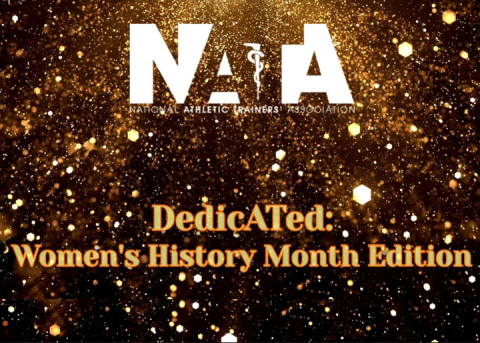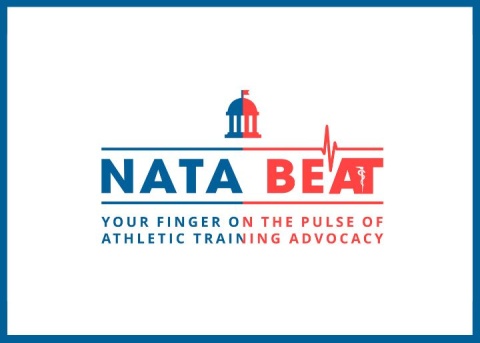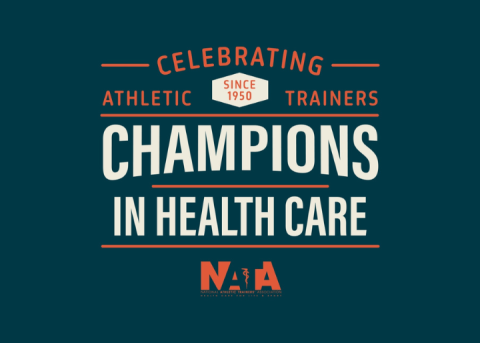June 9, 2015 by Todd Christman

By Jeremy Hawkins, PhD, ATC, ATP Director, Colorado Mesa University
Relationships between athletic training students and student athletes can be a touchy subject in many athletic training programs. Some program administrators have very specific rules for their students, ranging from banning dating of student athletes to not assigning students to the same sport as their significant other athlete. Others operate on the basis that if it doesn’t interfere with your clinical education, it is okay. And, I am sure you can find any number of variations across the country.
I mention this topic because I wonder if athletic training students understand the reason behind such rules. I have heard it said more than once that personal relationships are not that big of a deal because “the student athletes are our peers,” “I see them all the time on campus,” or “we were friends before I got into the athletic training program.” A number of other iterations also exist. In discussing this topic recently in an introductory course, the peer comment was made. For the first time, something occurred to me—I am also around my peers on a daily basis, yet my actions are different than what I have observed in a number of different athletic training clinics. It was an eye opening moment for me, helping me to realize that I need to do a better job educating my students on proper work relationships (even though we don’t refer to clinical education as work).
Why is this so important? Understanding the importance can go directly back to the NATA Code of Ethics. I have written about ethics before (see March 31, 2014 blog post), but want to focus today on principle 4.1 – Members should conduct themselves personally and professionally in a manner that does not compromise their professional responsibilities or the practice of athletic training. If, as an athletic training student, you are not a member of the National Athletic Trainers’ Association, you should become one. As a student member, this principle applies to you every bit as much as it does to your certified preceptor. Make sure all actions and interactions, both in the athletic training clinic and out, are viewed through this lens. Getting in the habit of making correct decisions while young in your career can help you to avoid problems later on.
The application of this idea is most likely the hard part. I don’t profess to have all the answers, nor do I think one approach is better than another. I do have two suggestions that I think may make a big difference. They have to do with the words we use.
You will note that throughout this post, I have referred to the place where you gain your clinical education as an athletic training clinic, not an athletic training room. When you think of a clinic, what thoughts come to mind? The Merriam-Webster online dictionary includes these two definitions: a facility (as of a hospital) for diagnosis and treatment of outpatients; a group practice in which several physicians work cooperatively. Can this definition also work for an athletic training clinic? Absolutely! But undoubtedly, some things will need to change. Student athletes will need to get used to the idea that they are in the athletic training clinic to receive diagnosis and treatment, and then leave; the athletic training clinic is not a place to hang out before or after treatment, or whenever else they want. As clinicians, we can foster this by working cooperatively to provide necessary care while having definite beginnings and endings to the services provided.
A second word change may also be beneficial. While gaining a clinical education, athletic training students should refer to the student athletes as patients, because they are indeed patients (person[s] who receive medical care or treatment). To me, this goes hand in hand with the idea of a clinic, but also makes me feel as though what I am doing as their athletic trainer is most important. The person I am treating isn’t the starting first baseman on our number one ranked baseball team, the prettiest girl on the volleyball team, or my best friend from high school. Rather, I view them as a patient under my medical care, and remember that I have a job to do. That job needs to be completed professionally and in accordance to best practices. Think about positive experiences you have had previously in a doctor’s office and replicate accordingly.
In conclusion, being an athletic training student is a great time for you to grow as a clinician and future professional. You are learning many things that will serve you well long into the future. Be aware of your actions and interactions and how they are portraying you as a professional. Make sure that nothing personally or professionally compromises your ability to practice athletic training. If referring to the setting in which you are gaining a clinical education as a clinic with patients is helpful for you, adopt those terms wholeheartedly.
Relationships between athletic training students and student athletes can be a touchy subject in many athletic training programs. Some program administrators have very specific rules for their students, ranging from banning dating of student athletes to not assigning students to the same sport as their significant other athlete. Others operate on the basis that if it doesn’t interfere with your clinical education, it is okay. And, I am sure you can find any number of variations across the country.
I mention this topic because I wonder if athletic training students understand the reason behind such rules. I have heard it said more than once that personal relationships are not that big of a deal because “the student athletes are our peers,” “I see them all the time on campus,” or “we were friends before I got into the athletic training program.” A number of other iterations also exist. In discussing this topic recently in an introductory course, the peer comment was made. For the first time, something occurred to me—I am also around my peers on a daily basis, yet my actions are different than what I have observed in a number of different athletic training clinics. It was an eye opening moment for me, helping me to realize that I need to do a better job educating my students on proper work relationships (even though we don’t refer to clinical education as work).
Why is this so important? Understanding the importance can go directly back to the NATA Code of Ethics. I have written about ethics before (see March 31, 2014 blog post), but want to focus today on principle 4.1 – Members should conduct themselves personally and professionally in a manner that does not compromise their professional responsibilities or the practice of athletic training. If, as an athletic training student, you are not a member of the National Athletic Trainers’ Association, you should become one. As a student member, this principle applies to you every bit as much as it does to your certified preceptor. Make sure all actions and interactions, both in the athletic training clinic and out, are viewed through this lens. Getting in the habit of making correct decisions while young in your career can help you to avoid problems later on.
The application of this idea is most likely the hard part. I don’t profess to have all the answers, nor do I think one approach is better than another. I do have two suggestions that I think may make a big difference. They have to do with the words we use.
You will note that throughout this post, I have referred to the place where you gain your clinical education as an athletic training clinic, not an athletic training room. When you think of a clinic, what thoughts come to mind? The Merriam-Webster online dictionary includes these two definitions: a facility (as of a hospital) for diagnosis and treatment of outpatients; a group practice in which several physicians work cooperatively. Can this definition also work for an athletic training clinic? Absolutely! But undoubtedly, some things will need to change. Student athletes will need to get used to the idea that they are in the athletic training clinic to receive diagnosis and treatment, and then leave; the athletic training clinic is not a place to hang out before or after treatment, or whenever else they want. As clinicians, we can foster this by working cooperatively to provide necessary care while having definite beginnings and endings to the services provided.
A second word change may also be beneficial. While gaining a clinical education, athletic training students should refer to the student athletes as patients, because they are indeed patients (person[s] who receive medical care or treatment). To me, this goes hand in hand with the idea of a clinic, but also makes me feel as though what I am doing as their athletic trainer is most important. The person I am treating isn’t the starting first baseman on our number one ranked baseball team, the prettiest girl on the volleyball team, or my best friend from high school. Rather, I view them as a patient under my medical care, and remember that I have a job to do. That job needs to be completed professionally and in accordance to best practices. Think about positive experiences you have had previously in a doctor’s office and replicate accordingly.
In conclusion, being an athletic training student is a great time for you to grow as a clinician and future professional. You are learning many things that will serve you well long into the future. Be aware of your actions and interactions and how they are portraying you as a professional. Make sure that nothing personally or professionally compromises your ability to practice athletic training. If referring to the setting in which you are gaining a clinical education as a clinic with patients is helpful for you, adopt those terms wholeheartedly.



